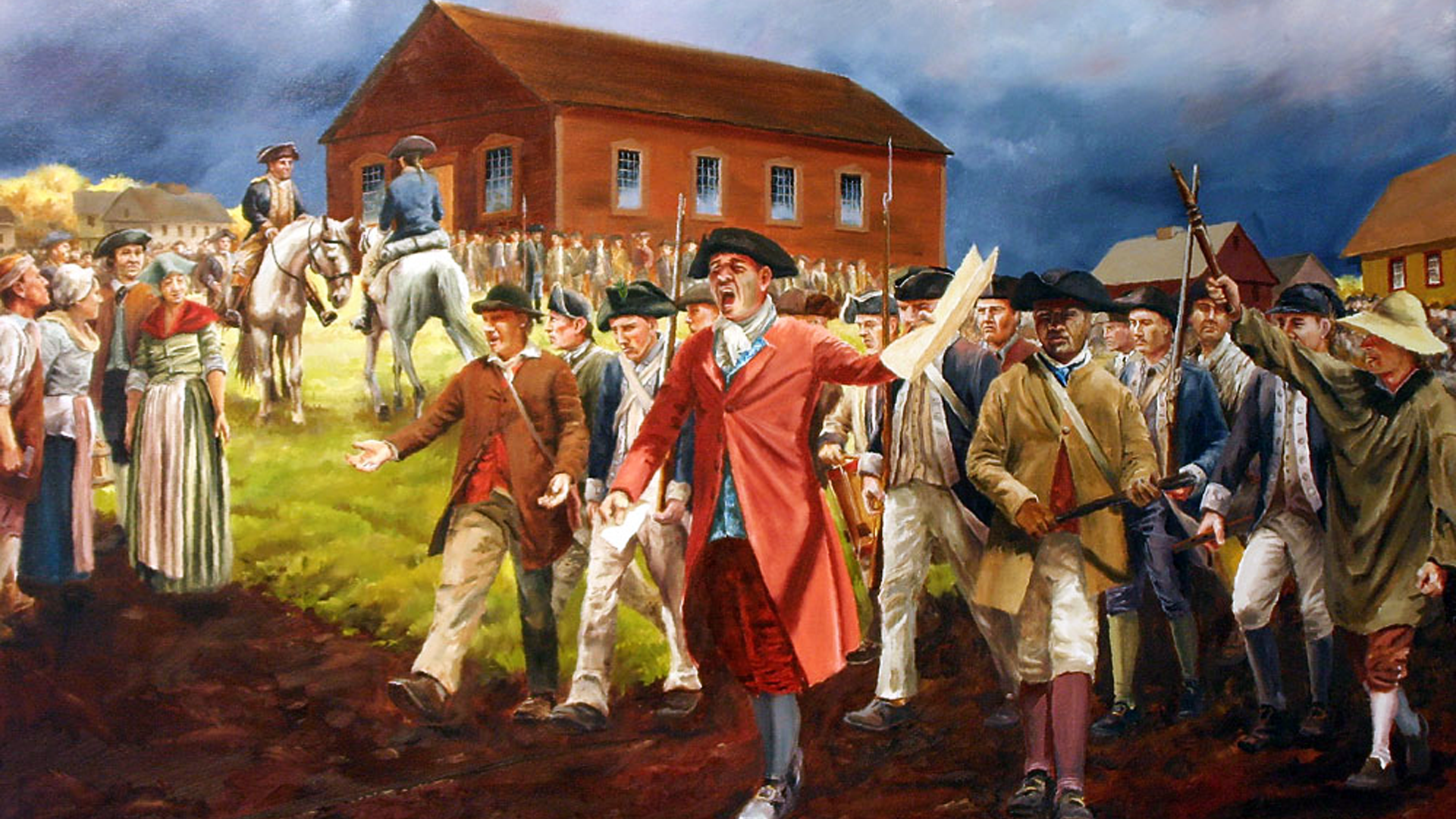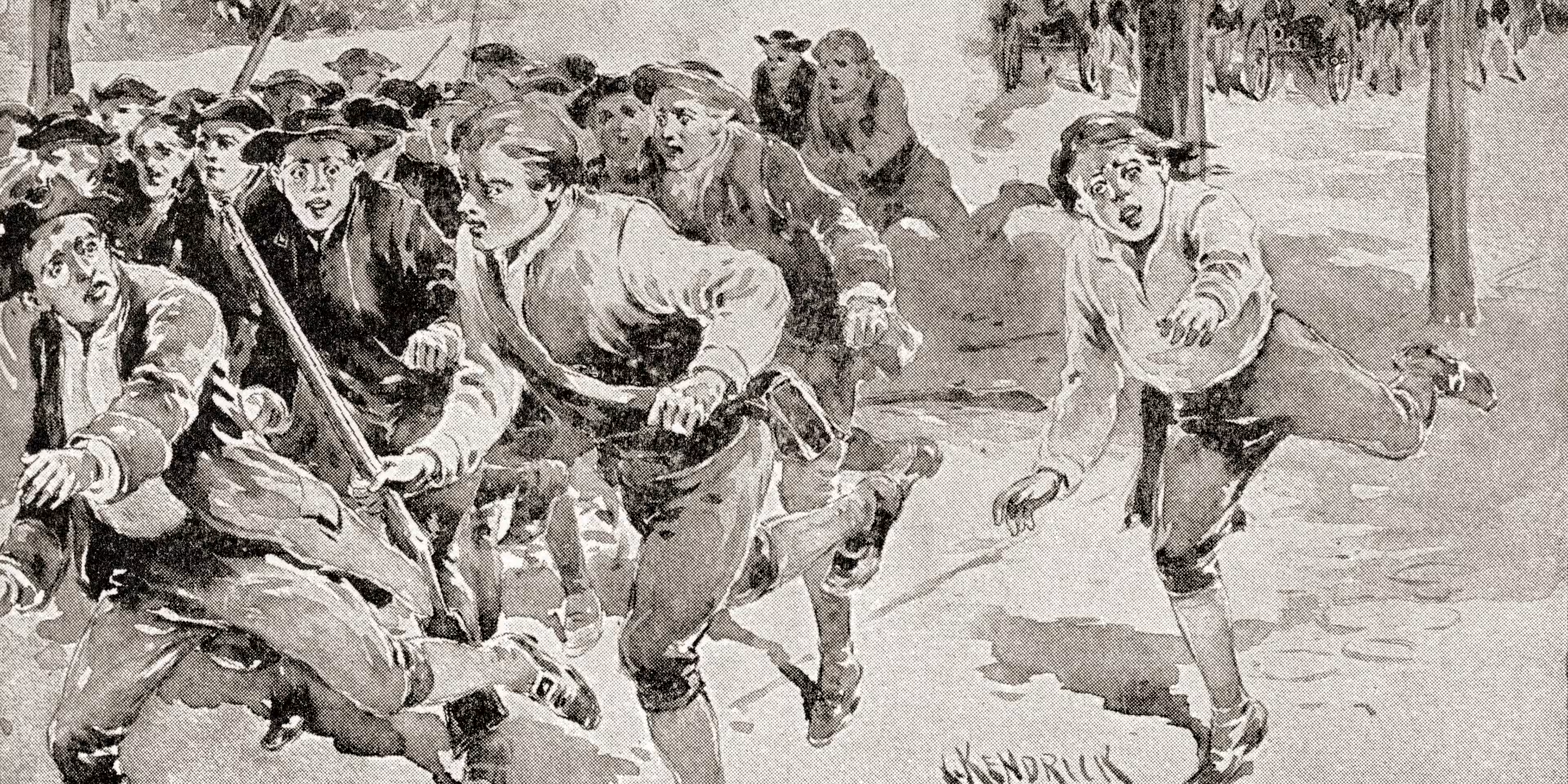Shays’ Rebellion Begins

Farmers and veterans in Massachusetts rise up against debt, taxes, and foreclosures during Shays’ Rebellion.
What Happened?
On August 29, 1786, hundreds of armed farmers and Revolutionary War veterans stormed the courthouse in Northampton, Massachusetts, blocking debt hearings. The state’s refusal to provide relief from crushing taxes and foreclosures drove ordinary citizens, many of whom had fought for independence, into open rebellion.
The rebellion was fueled by economic collapse. Farmers in western Massachusetts were drowning in debt, with creditors seizing property and jailing debtors. Adding insult, the legislature raised taxes rather than offering relief. Former Continental Army captain Daniel Shays quickly emerged as a symbolic leader, lending his name to the uprising.
Rebels, calling themselves 'Regulators,' shut down courts across Massachusetts to prevent property seizures and arrests. In January 1787, Shays led 1,500 men in a march on the federal arsenal in Springfield, but state militia, funded by wealthy merchants, repelled the assault, killing four and wounding 20. Within weeks, the rebellion collapsed.
Though many rebels faced arrest, most (including Shays) were eventually granted amnesty. The real shock came not from the violence itself, but from what it revealed: the national government under the Articles of Confederation had no power to step in. If a handful of struggling farmers could rattle the republic, what might foreign powers do?
George Washington, alarmed, wrote that he could scarcely believe Americans were rising against their own government so soon after independence. The unrest strengthened calls for a Constitutional Convention in Philadelphia, where delegates would draft a stronger framework for national governance. In this way, Shays’ Rebellion helped pave the road from revolution to Constitution.
Why It Matters
Shays’ Rebellion revealed a dangerous gap between the promises of the Revolution and the realities of postwar America. Veterans who had fought for liberty now found themselves jailed for debt, while the weak Articles of Confederation left the federal government powerless to intervene. The uprising underscored the urgent need for a stronger national framework, leading directly to the Constitutional Convention and the creation of the U.S. Constitution. It was a turning point: a reminder that liberty without justice can ignite rebellion, and that democracy must be built not just on ideals, but on economic fairness.
?
Why were Revolutionary War veterans particularly vulnerable to debt and foreclosure after the war?
How did the Articles of Confederation limit the federal government’s ability to respond to Shays’ Rebellion?
Why did George Washington and other leaders see Shays’ Rebellion as a threat to the survival of the republic?
What role did wealthy merchants play in funding the militia that suppressed the rebellion?
How did Shays’ Rebellion influence the decision to call the Constitutional Convention of 1787?
Dig Deeper
Shays’ Rebellion reveals the weakness of the federal government, which lacked the power to respond effectively under the Articles of Confederation.
Related

From Articles to the Constitution
The Articles of Confederation got us through a revolution—but not much more. Weak laws, no executive, and constant in-fighting forced the Founders back to the drawing board. What came next? The Constitution.

The Constitutional Convention: Building a More Perfect Mess
In the summer of 1787, 55 men locked themselves in a room to fix the government—and ended up rewriting it from scratch. What came out wasn’t perfect, but it changed everything.

Federalists vs. Anti-Federalists: The Battle That Built the Constitution
One side feared chaos. The other feared tyranny. Together, they gave us the Constitution—and the Bill of Rights.
Further Reading
Stay curious!
